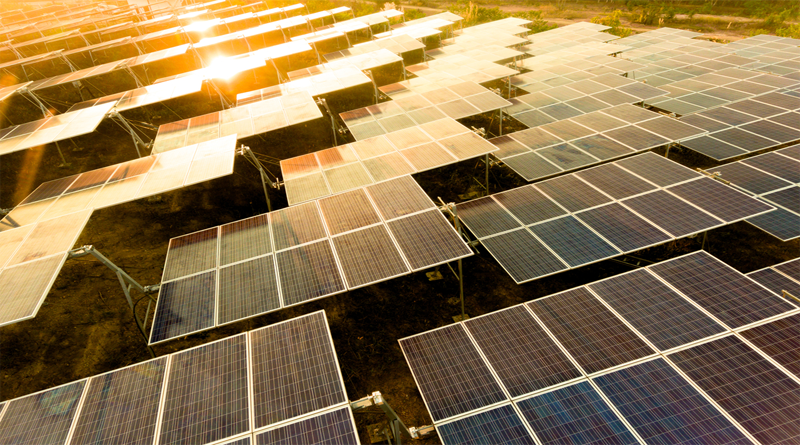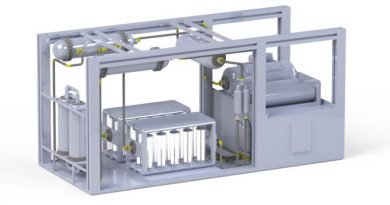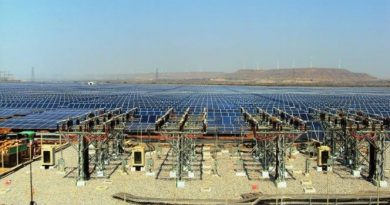As UP solar bidders worry about cancellation, bigger challenges on the horizon for Solar

After a heady 2017, when close to 14GW of renewable energy tenders were bid for and allotted, the sector seems to be falling into what could only be termed tender fatigue in 2018. This could be alarming for the government, which had announced plans for a further 30 GW of tenders in 2018-19, a number that should only go up further if the new target of 225 GW of total capacity by 2022 is taken up in earnest.
Interestingly, while some firms have complained of being stretched financially to participate in ever larger tenders, other reasons have also come to the fore recently, be it a high reserve price, lack of transmission infrastructure, or even plain productivity issues between say, installations in UP versus those in Rajasthan. The UP case is particularly interesting, as the National Solar Energy Federation of India (NSEFI), representing solar energy developers, has stepped in to prevent the cancellation of the 1000-MW solar auction last week by the Uttar Pradesh New and Renewable Energy Development Agency (Upreda).
The reverse auction for grid-connected solar projects was held on July 10, with 13 firms bidding, leading to oversubscription by 870 MW. The lowest discovered tariff at ₹3.48 per unit was way higher than tariffs that the SECI itself attracted recently, at Rs 2.44. That, developers fear, might lead to the tender being cancelled by the state undertaking.
Adani Group-promoted Mahoba Solar was the lowest bidder followed by Acme Solar, Azure Power and others.
So could this be a sign of bigger challenges? We reckon yes. And here are the 4 good reasons why.
Right on top is policy uncertainty. Though quoted as a reason regularly, the clouds of uncertainty refuse to go away, especially for solar power. With the majority of hardware being imported from China, developers are caught in the most efficient setup and the government’s desire to encourage domestic manufacturing. While there is little doubt on the plus points of each camp, there are no points for guessing who suffers. Developers are already bidding cautiously now, wary of any changes between their winning bids and set up. On top of all that comes the latest ‘recommendations’ from the Directorate General of Trade Remedies (DGTR), to impose a safeguard duty on solar cells and modules. The DGTR has made a case for 25% in year 1, followed by a reduction to 20% in the first six months of year 2. The final six months in year 2 should see a duty level of 15%, according to it. The recommendations gel in nicely with the governments plan to push harder on the home stretch of its enhanced solar targets, when it also hopes to give a fillip to manufacturing in India by dint of sheer scale of orders. The only issue is that China’s overcapacity is not going anywhere, so developers and experts continue to predict a 12-20% impact on power prices if forced to source Indian.
A second reason could be the lifeline of every business, money. The solar sector is hitting new peaks as far as funding goes, with the Apr-June quarter of 2018 seeing corporate funding hit $5.3 billion. India saw its share grow to $3.62 billion in 2017, a hefty increase over previous years. With interest rates on an upward curve still and tight competition, it is anyone’s guess how long these highs will sustain. Which explains the consolidation that has been afoot too. The government is probably alive to this, which is why it took the lead in establishing the International Solar Alliance, with a primary funding goal of a trillion dollars, but that’s for a little later. For now, with domestic banks still smarting from their own NPA’s, funding could dry up faster than a shallow lake in the Indian summer.
Reason three is the existing infrastructure availability. Bidders are increasingly shying away from risk-taking where a significant part of the project is dependent on state utilities. Be it the power purchase agreements, or evacuation f power using existing or ‘to be set up’ transmission networks, developers have real cause for worry. Not only can these projects bleed due to delays in the ‘last mile’ connectivity to be provided by third party’s, developers might find themselves with no recourse to compensate for a delay that is not of their own making.
Finally, the push for Hybrid, or Wind + Solar models, among other factors. While a great idea on paper, players are unanimous in their view that adding on Wind energy to the project leads to an increase in costs and complexity that not every developer can manage currently. In fact, just like ordinary people worry about the dependability of their solar panels, we found a number of solar developers suspicious of the quality and longevity of wind energy installations. As some of the older projects mature, developers are also seeing some of their calculations go an awry, and hence extend their payback period. From the extra dust in Northern India to longer downtime due to grid issues, and issues with access to water even, these all add up. And with a tighter funding environment, can be the vital difference between confident bidding and a strategic withdrawal.
For India to hit its targets, it will need to find an improved approach and story. By all accounts, the hunt for that is still on.
copyright:iamrenew.com




